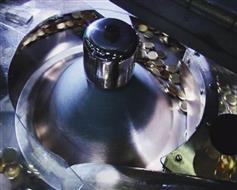Introduction to error coins
How many coins are produced all over the world? Nobody knows for sure, but since the United States Mint alone strikes
more than 50 million coins on a daily basis we would be right to assume that the amount is in the billions each year. Whenever
that much of anything is produced there are bound to be errors made. Modern coins are struck
at such a high rate of speed that the human eye can barely perceive it. The fastest of the new coin presses can strike
nearly ten coins per second! If these coins are somehow incorrect, the only way to spot the error is by examining the
finished pieces after they fall into the receiving hopper. While this is done on an occasional basis, the day-to-day reality
of producing millions of coins is that all but a very few United States coins are shipped without any visual inspection.

To help prevent error coins from leaving the mints or even from being produced in the first place, each coining facility
has installed riddling devices. These are mechanical sifters that cull out undersize, oversize and mis-shapen
planchets and coins. In theory, this should prevent all but normally-sized and normally-shaped
coins from leaving the mint, but the evidence found in the error coins themselves proves otherwise. Though most of the errors
that manage to pass through the mints' quality control stations are of approximately normal configuration, some wildly
oversize or mis-shapen pieces do escape. This is sometimes no accident, as mint employees have been caught selling error
coins to collectors and dealers for a nice profit.
Dealers and collectors of mint errors classify each piece under one of three headings: Planchet, Die or Strike. This
handy "P-D-S" system is easy to remember, and it can account for just about any type of error one encounters. Of course,
some coins are the product of multiple errors. For example, a defective planchet can lead to a mis-strike, with the resulting
coin being the product of both "P" and "S" errors. For the most part, however, mint error coins fall under just one of the
three headings.
Error coins can be worth their weight in gold-and sometimes a whole lot more. They are often many times more valuable
than perfect, error-free coins because they're much scarcer, and also because mint-error collecting has grown by leaps and
bounds in recent years, to the point where it is now one of the rare coin hobby's most active specialty areas. Thousands
of collectors aggressively pursue imperfect coins, and when they find an error that's exceptionally dramatic in a dealer's
display case, they gladly pay a very strong premium to obtain it.